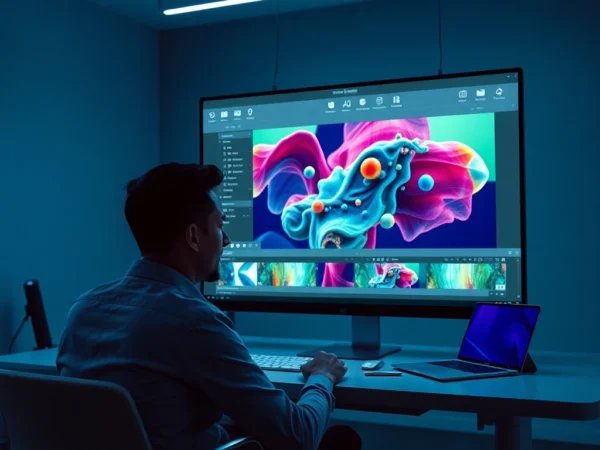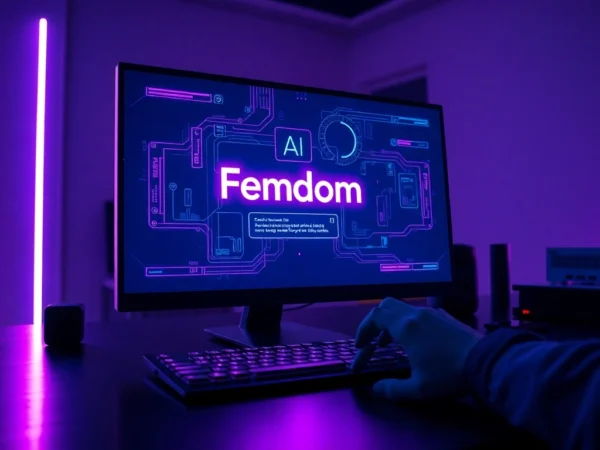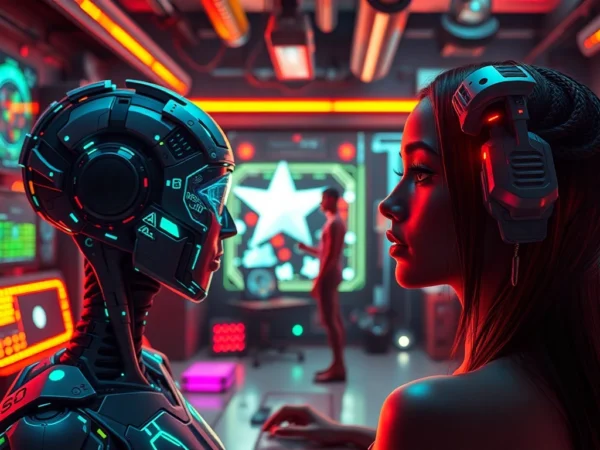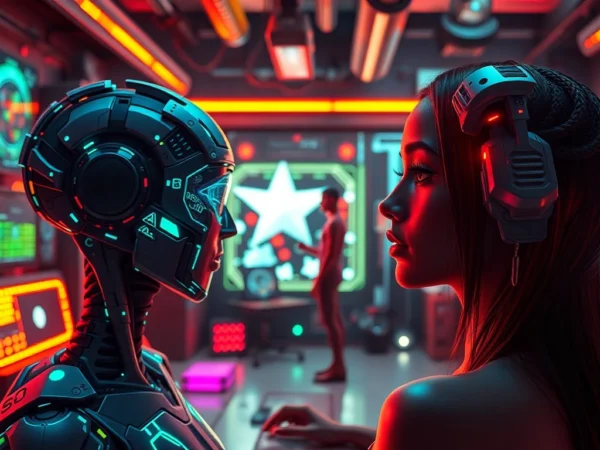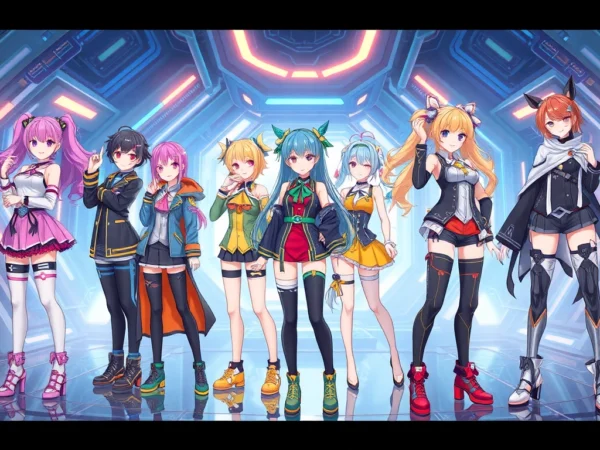Nano Banana AI: The Future of Intelligent Image Editing by Google
Revolutionizing Image Editing: The Rise of Nano Banana AI
In the rapidly evolving world of artificial intelligence, one of the most groundbreaking developments in recent months has been the emergence of nano banana ai. Marketed as Google’s latest and most advanced AI-powered image editor, Nano Banana AI promises to redefine what is possible in the realm of digital image manipulation. Unlike traditional tools that rely on surface-level edits and basic algorithms, Nano Banana AI leverages deep reasoning, contextual understanding, and spatial awareness to deliver unprecedented accuracy and consistency. This comprehensive analysis explores how Nano Banana AI is transforming the landscape of AI image editing, how it outperforms competitors, and what it means for creators, businesses, and the future of visual technology.
The Significance of Nano Banana AI in the Current AI Landscape
A Paradigm Shift in Visual Creativity
Artificial intelligence has long promised to revolutionize creative industries—from graphic design and photography to advertising and entertainment. However, until recently, most AI image editing tools have been limited to simple filters, basic object removal, or superficial color adjustments. The advent of Nano Banana AI, often associated with Google’s Gemini project, marks a pivotal shift—an evolution from mere automation to a form of intelligent understanding. It is not just about generating pretty pictures but about enabling AI to think about images in ways that mirror human cognition.
This shift is significant because it addresses longstanding limitations in AI editing: lack of contextual awareness, inconsistency across edits, and inability to understand complex visual narratives. Nano Banana AI claims to bridge this gap by integrating advanced reasoning capabilities—meaning it can interpret the intent behind edits, maintain logical consistency, and adapt to complex scenarios with remarkable precision.
How Nano Banana AI Outperforms Competitors with Advanced Reasoning and Deep Contextual Understanding
Deep Reasoning Capabilities
Unlike conventional image editors such as Flux Kontext or Gemini 2.0 Flash, which perform basic manipulations like background swaps or color adjustments, Nano Banana AI employs a form of AI that can reason through complex editing tasks. This reasoning ability allows it to understand not just what the user wants to change but why, leading to more natural and logically consistent results.
For example, when editing a portrait, Nano Banana AI can preserve facial features, lighting, and shadows coherently across multiple alterations. If you change the background, the AI considers the lighting conditions, perspective, and spatial relationships, ensuring that the new background seamlessly integrates with the subject. This is achieved through layered reasoning, which combines data about the scene, object recognition, and contextual cues to produce outputs that are indistinguishable from professional manual edits.
Superior Contextual Understanding
Context is everything in visual storytelling. Traditional AI tools might struggle to maintain contextual integrity when making multiple edits or understanding subtle nuances. Nano Banana AI, however, has been trained to grasp the entire visual scene—recognizing objects, their relationships, and the intended narrative—thus ensuring that each edit aligns with the overall context.
Moreover, the platform’s deep understanding extends to complex scenarios like changing object orientations, adjusting scene elements for perspective, or even manipulating three-dimensional spatial relationships. This means that edits are not only precise but also preserve the coherence and realism of the original image, elevating the quality of output to a professional level.
Core Features: 3D Spatial Awareness, Consistency, and Logical Image Manipulation
3D Spatial Awareness
One of Nano Banana AI’s standout features is its ability to comprehend three-dimensional space within images. Unlike flat, two-dimensional editing tools, Nano Banana AI recognizes depth cues, object placement, and spatial relationships. This allows for realistic perspective changes, object rotations, and environment modifications that maintain spatial integrity.
For instance, if a user wants to rotate an object or change its position within a scene, the AI can adjust shadows, lighting, and perspective accordingly. This 3D spatial awareness makes Nano Banana AI particularly valuable for product visualization, virtual staging, and creative projects requiring complex scene manipulation.
Unmatched Consistency Across Edits
Consistency is a common challenge in AI image editing—especially when multiple modifications are needed over time. Nano Banana AI claims a 95-99% accuracy rate in maintaining detail, character, and scene coherence across successive edits, significantly outperforming competitors whose accuracy often ranges between 20-70%. This consistency is achieved through advanced reasoning algorithms that remember previous modifications and apply them logically in future edits.
Logical and Context-Aware Manipulation
Beyond simple changes, Nano Banana AI can perform logical edits—such as swapping backgrounds while preserving subject integrity, changing facial expressions naturally, or adjusting environmental elements to fit a narrative. Its ability to think through the consequences of each edit ensures that results are not only visually appealing but also logically sound.
Comparative Analysis: Traditional Tools vs. Nano Banana AI
Flux Kontext
Flux Kontext, one of the earlier AI image editing tools, offers basic capabilities like background removal and simple object adjustments. While useful for quick edits, it lacks the depth of understanding and reasoning found in Nano Banana AI. Flux Kontext often struggles with maintaining consistency, especially in complex scenes or multi-step edits, leading to artifacts or unnatural results.
Gemini 2.0 Flash
Google’s Gemini 2.0 Flash, and its subsequent Nano Banana model, mark significant improvements over earlier versions. However, even Gemini 2.0 Flash has limitations in deep contextual reasoning and 3D spatial awareness. While it can perform impressive edits like background swaps and color adjustments, it may falter in complex scenarios requiring understanding of scene depth or multiple object interactions.
Why Nano Banana AI Stands Out
Compared to these tools, Nano Banana AI’s core strength lies in its ability to think, reason, and understand images at a human level. Its capacity to perform complex, multi-layered edits with perfect consistency makes it a superior choice for professional applications. It is not merely a tool but an intelligent partner in creative workflows, capable of executing nuanced edits that previously required manual effort.
Target Audience and Pricing Structures
From Casual Creators to Enterprise Solutions
Understanding the diverse needs of its user base, Nano Banana AI offers a tiered pricing model designed to accommodate everyone—from individual hobbyists to large corporations. The platform’s three main plans include:
- Basic Plan : Ideal for casual creators and small projects, offering core editing features with limited concurrency and priority support.
- Pro Plan : Suitable for professional designers, marketers, and content creators requiring advanced features, higher processing limits, and collaborative tools.
- Enterprise Solutions : Tailored for large organizations, agencies, and enterprise-level needs, including API access, custom integrations, and dedicated support teams.
Why the Investment Is Justified
Given the platform’s claim of 95-99% accuracy and its ability to handle complex, contextually-aware edits, the value proposition becomes clear. Compared to the cost of manual editing or inferior AI tools, Nano Banana AI provides a significant boost in efficiency, quality, and creative potential. For businesses, this means faster turnaround times, higher-quality visuals, and the ability to scale creative workflows without sacrificing precision.
The Ethical and Philosophical Dimensions of AI That Think
Rethinking AI Creativity
At the heart of Nano Banana AI’s innovation lies a profound philosophical question: What does it mean for an AI to “think” about images? Unlike traditional algorithms that operate on fixed rules, Nano Banana AI embodies a form of artificial cognition—an attempt to emulate human-like understanding and reasoning in visual contexts.
This raises ethical considerations about AI’s role in creative industries. If AI can truly comprehend and reason about images, it challenges notions of originality, authorship, and artistic authenticity. It also prompts us to consider how human artists can collaborate with such intelligent systems—leveraging their capabilities without undermining human creativity.
Implications for Digital Ethics and Future Creativity
As Nano Banana AI and similar technologies evolve, they hold the potential to democratize access to high-quality image editing, reduce barriers for small creators, and enable new forms of digital expression. However, they also pose questions about authenticity, manipulation, and misinformation. Responsible development and deployment will be essential to ensure these powerful tools serve societal good while respecting intellectual property and ethical standards.
The Future of Visual Creativity with Nano Banana AI
Transforming the Creative Ecosystem
Looking ahead, Nano Banana AI’s capacity for advanced reasoning and contextual understanding signals a new era in digital creativity. Artists, designers, and marketers will be able to execute complex visual concepts rapidly, experimenting with ideas that previously required extensive manual effort. This democratization of high-level editing tools could lead to a surge in innovative visual content across industries.
Potential Impact on Industries
- Advertising & Marketing: Faster production of compelling campaigns with precisely tailored visuals.
- Entertainment & Gaming: Dynamic scene creation, character design, and special effects powered by AI reasoning.
- Fashion & E-commerce: Realistic virtual try-ons, product visualization, and personalized content generation.
- Education & Training: Interactive visual aids and realistic simulations powered by intelligent editing.
Envisioning the Next Steps
As the technology matures, integration with other AI systems—such as generative models, augmented reality, and virtual environments—will further expand creative possibilities. The notion of AI as a collaborative partner, rather than just a tool, will become mainstream, fostering a new symbiosis between human intuition and machine intelligence.
Conclusion: Embracing the Future with Intelligent Image Editing
In conclusion, Nano Banana AI stands at the forefront of a paradigm shift in AI-powered image editing. Its advanced reasoning capabilities, deep contextual understanding, and spatial awareness elevate it beyond traditional tools, making it a game-changer for creators and enterprises alike. As it continues to evolve, it embodies a profound philosophical shift—an AI that can truly “think” about images much like humans do.
For those interested in the cutting edge of digital innovation, keeping an eye on google nano banana and its developments will be essential. This technology heralds a new era where visual creativity is limited only by imagination—not by the capabilities of the tools we use.


